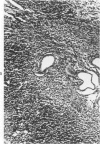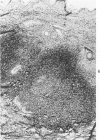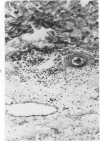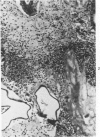Abstract
Efferent lymph was collected over long periods via catheters surgically placed in popliteal and prefemoral lymph nodes of sheep. Prostaglandin (PG) E and F equivalents were measured with a radioimmunoassay. After stimulation with heat-killed Escherichia coli, PG levels rose dramatically in the efferent lymph but were undetectable in the contralateral control lymphatics or in the systemic circulation. When E coli were infused directly into a lymph node, the PG levels in the effluent lymph were inhibited with indomethacin. Carrageenan, delayed hypersensitivity, and lymphocyte transfer reactions were also studied. In the classic acute inflammations (caused by E coli and carrageenan) the PG levels rose early in the response (first 4 to 6 hours) compared with delayed production in the immune reactions. With PPD, PG levels peaked between 10 and 20 hours after injections, while PG rose 127 hours after allogeneic lymphocytes were injected. These results are discussed in relation to the role of PG in inflammation, and the use of the sheep lymphatic model in PG research is emphasized.
Full text
PDF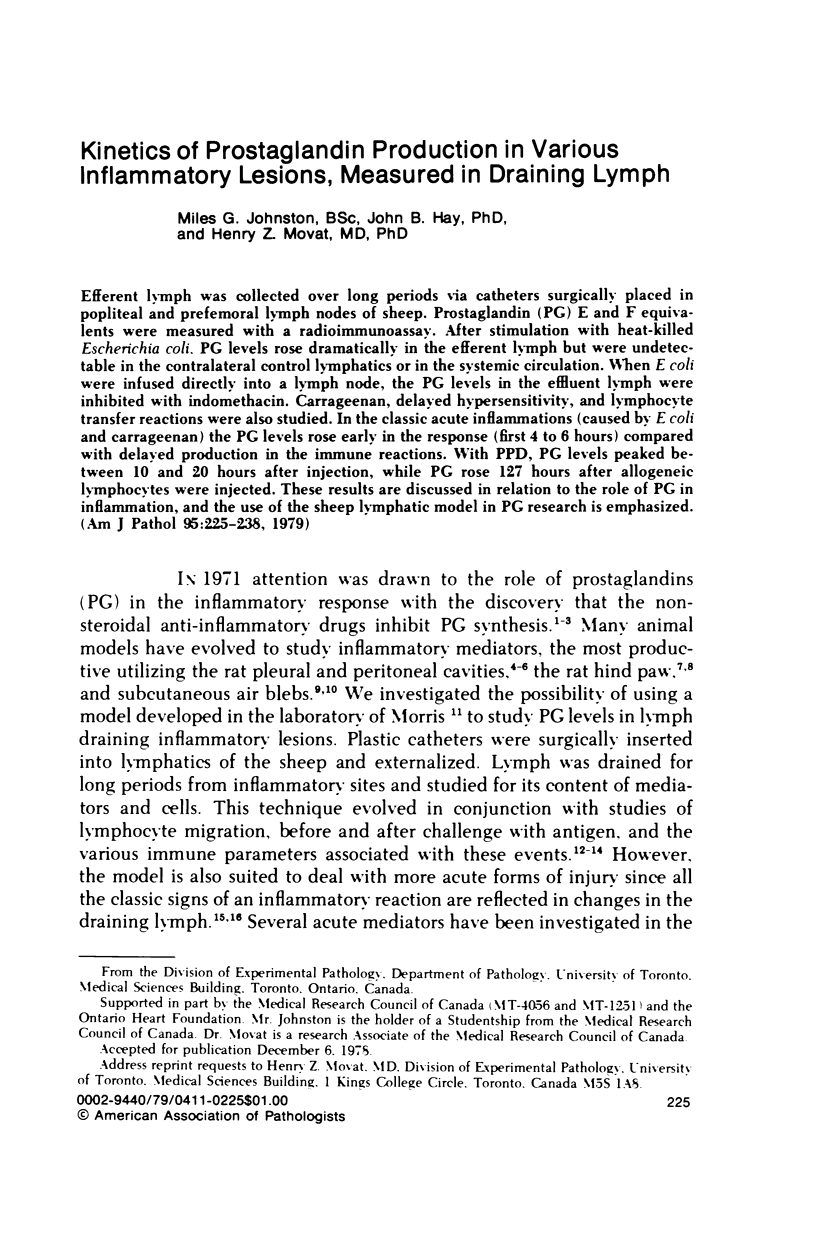
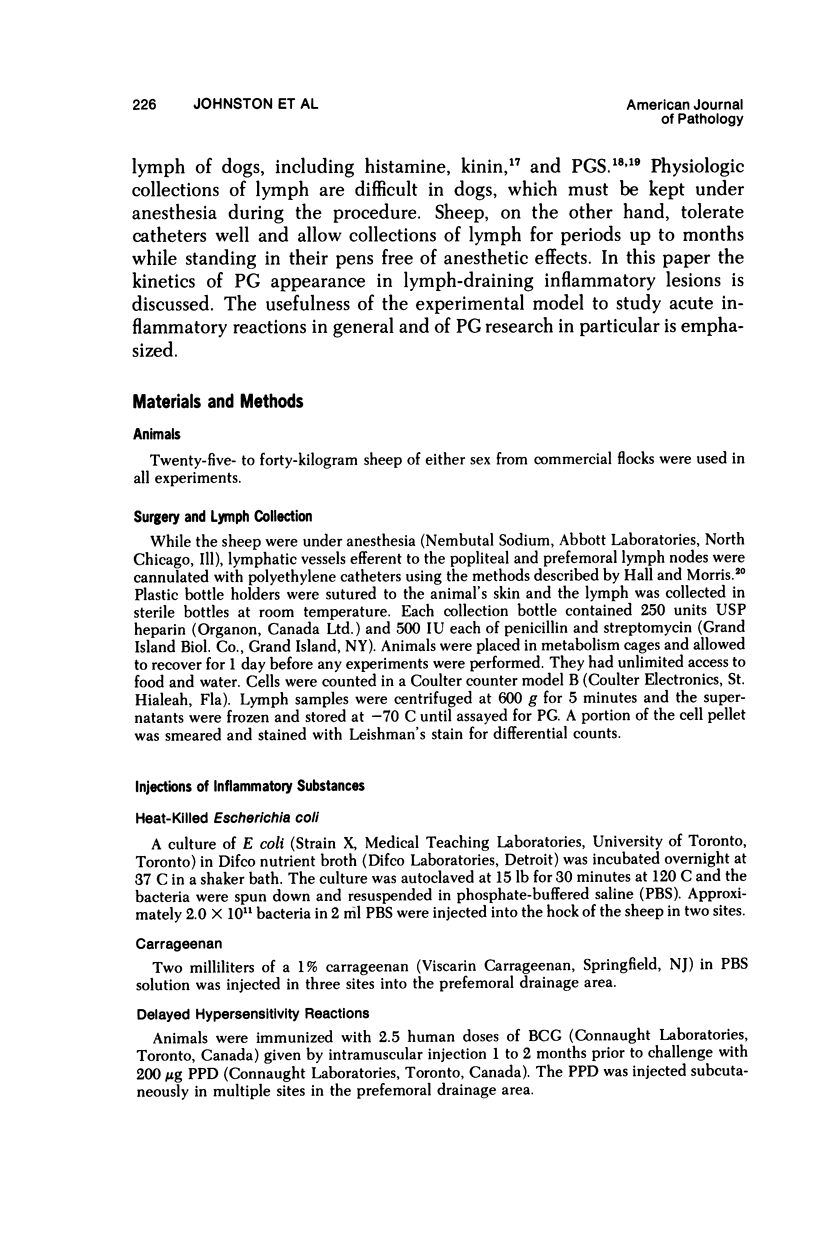
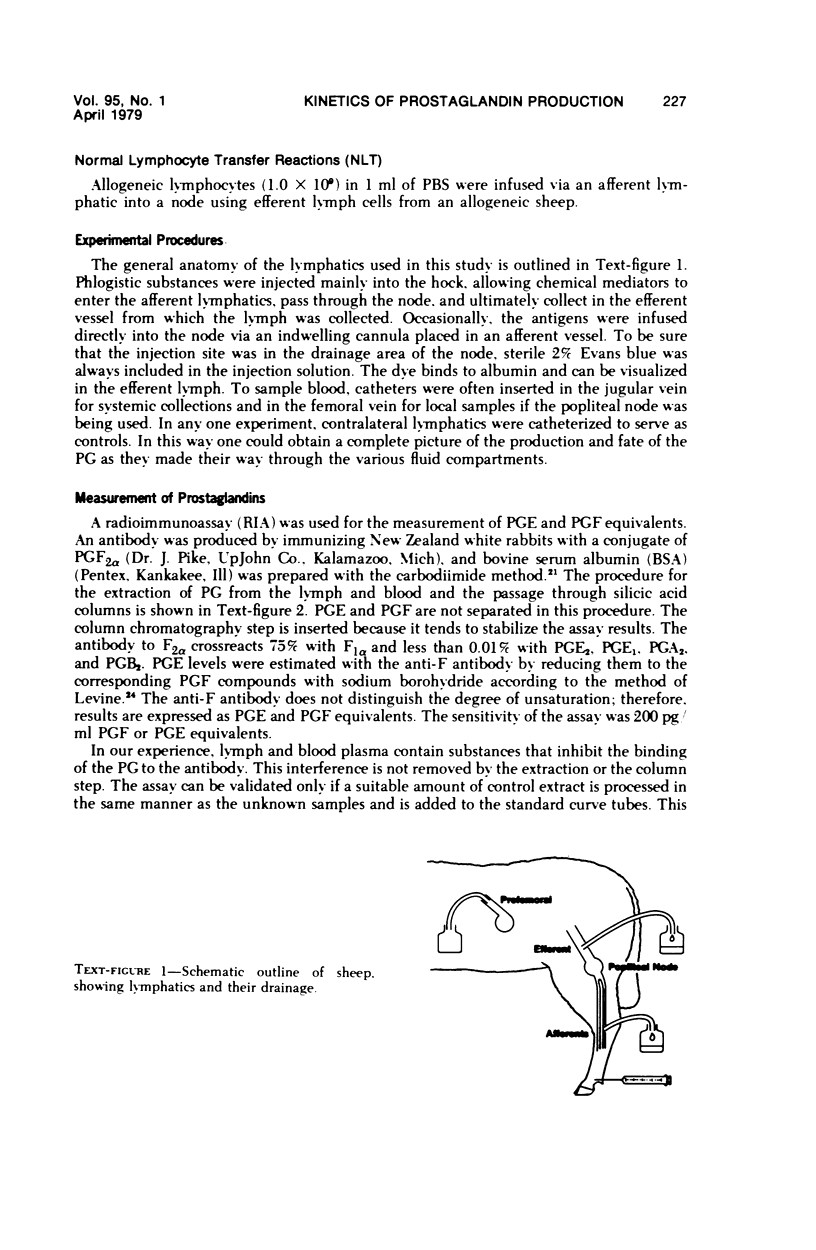
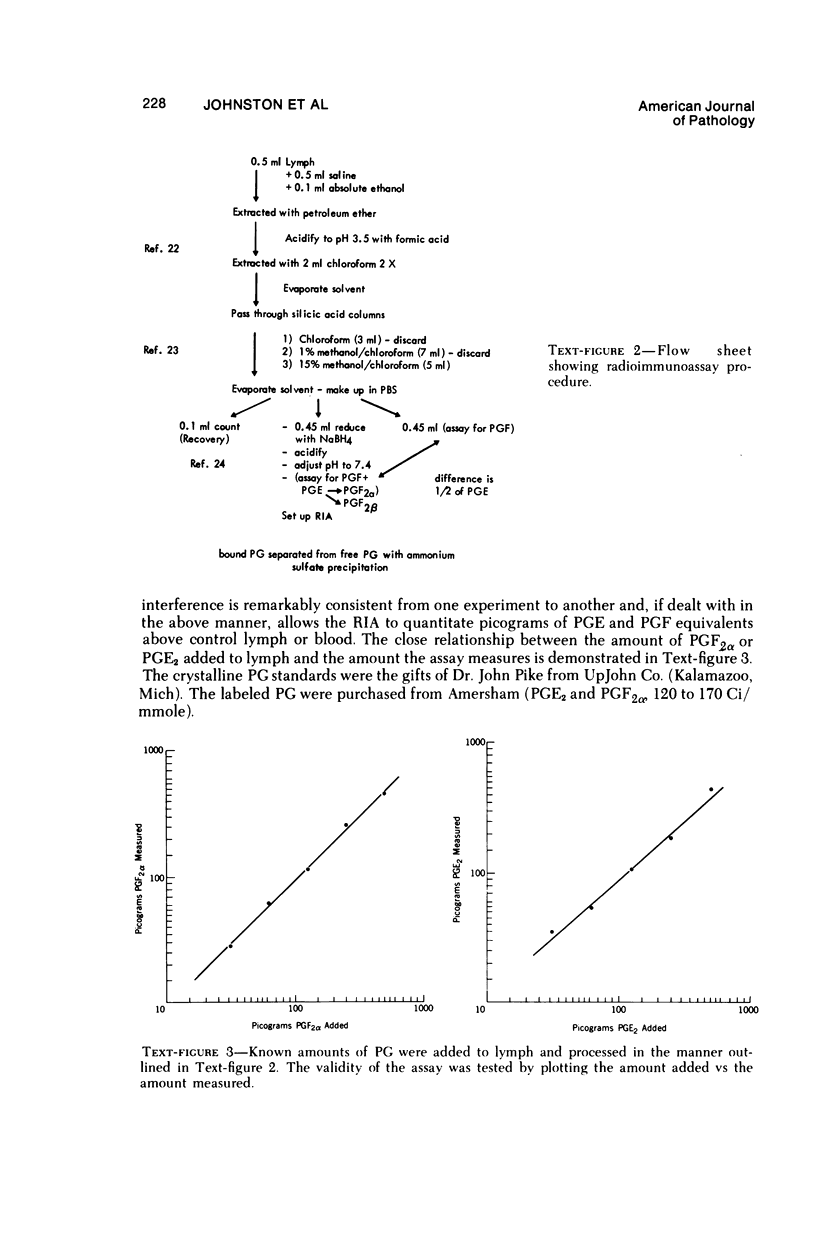
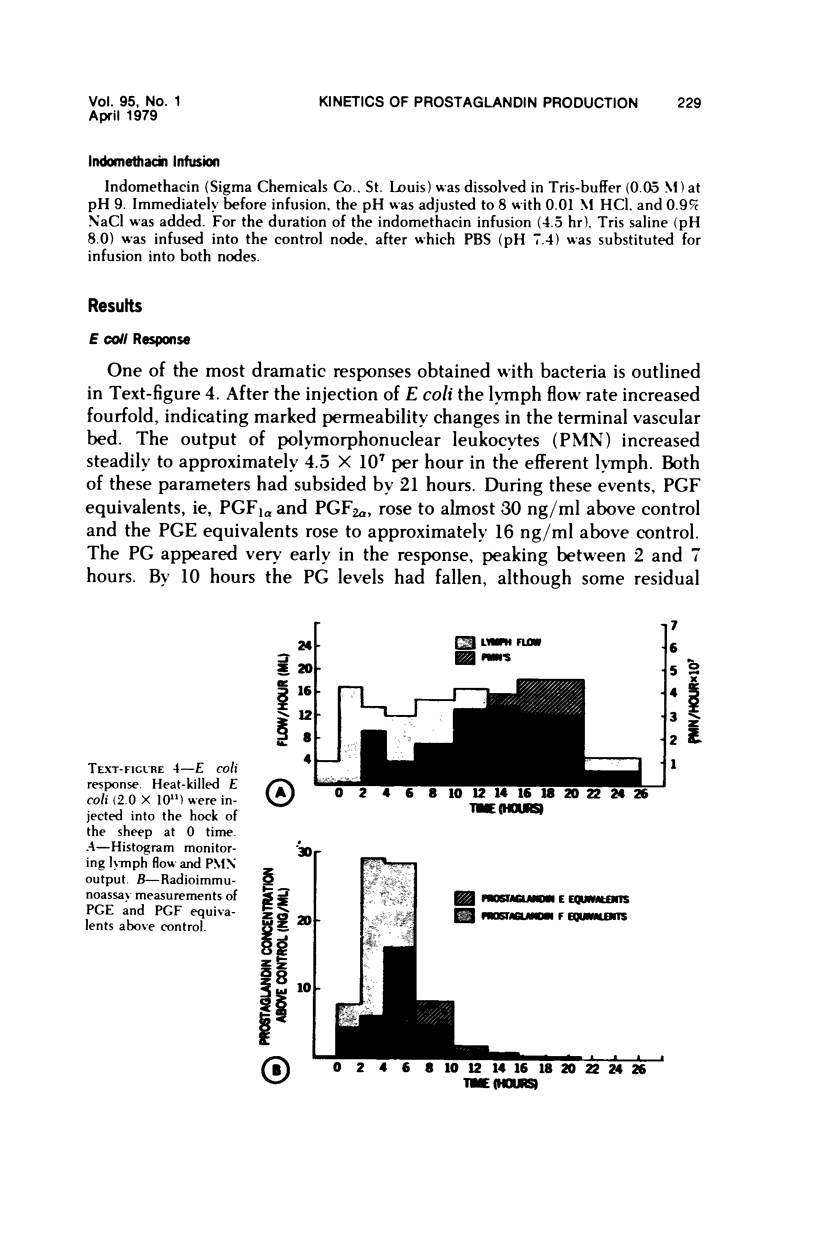
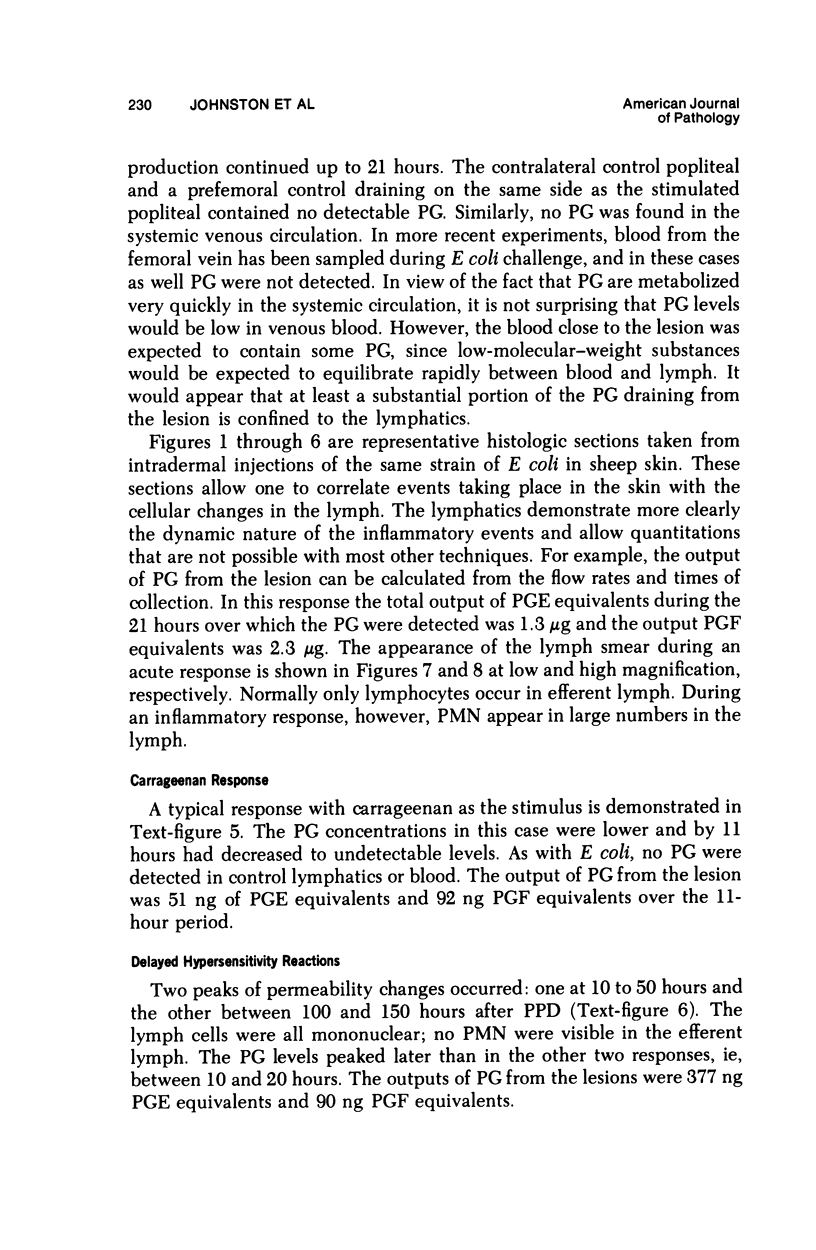
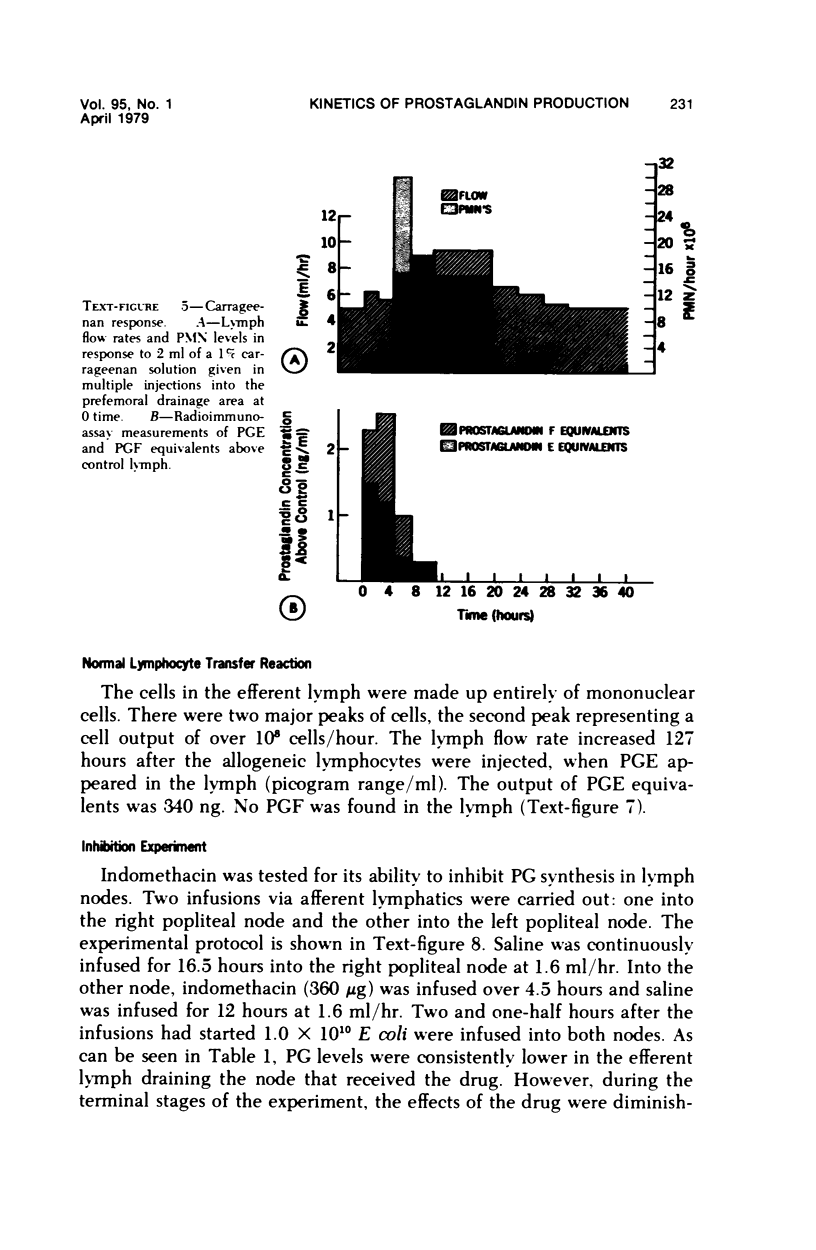
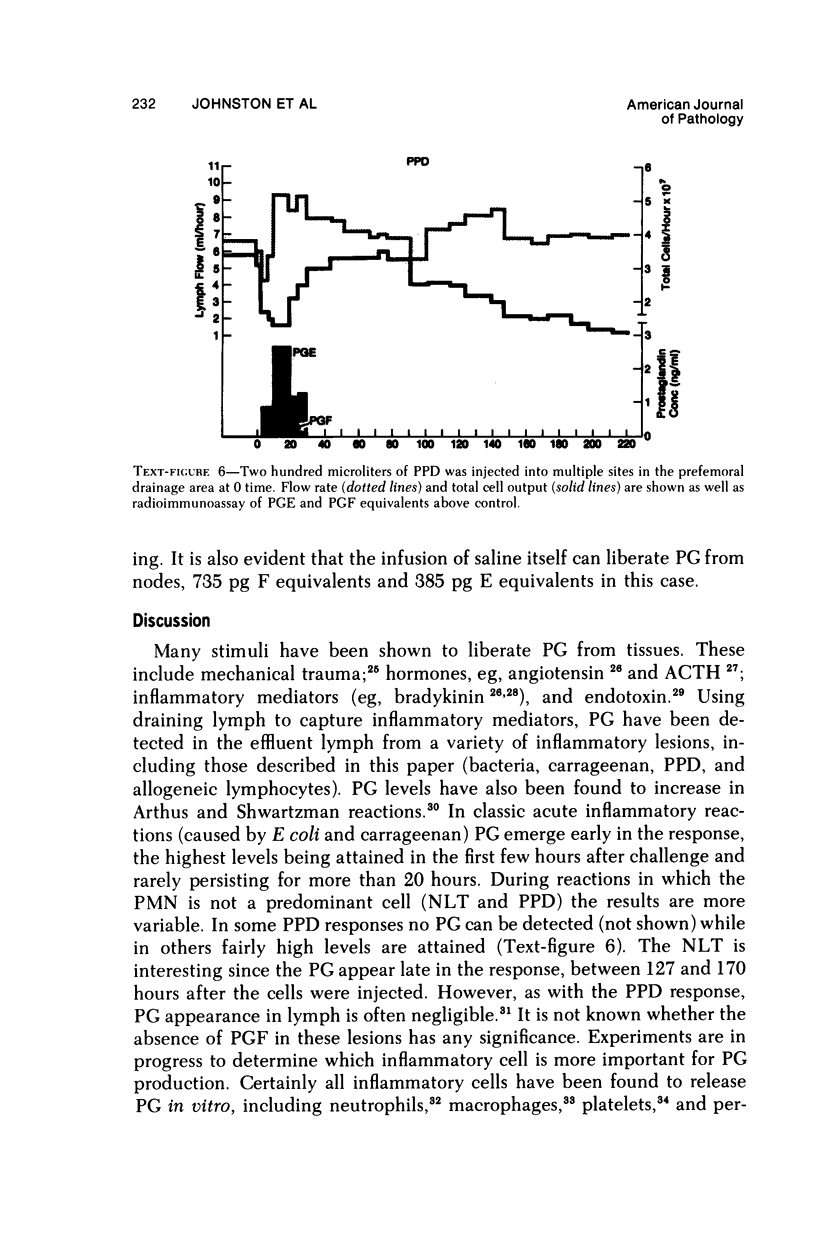
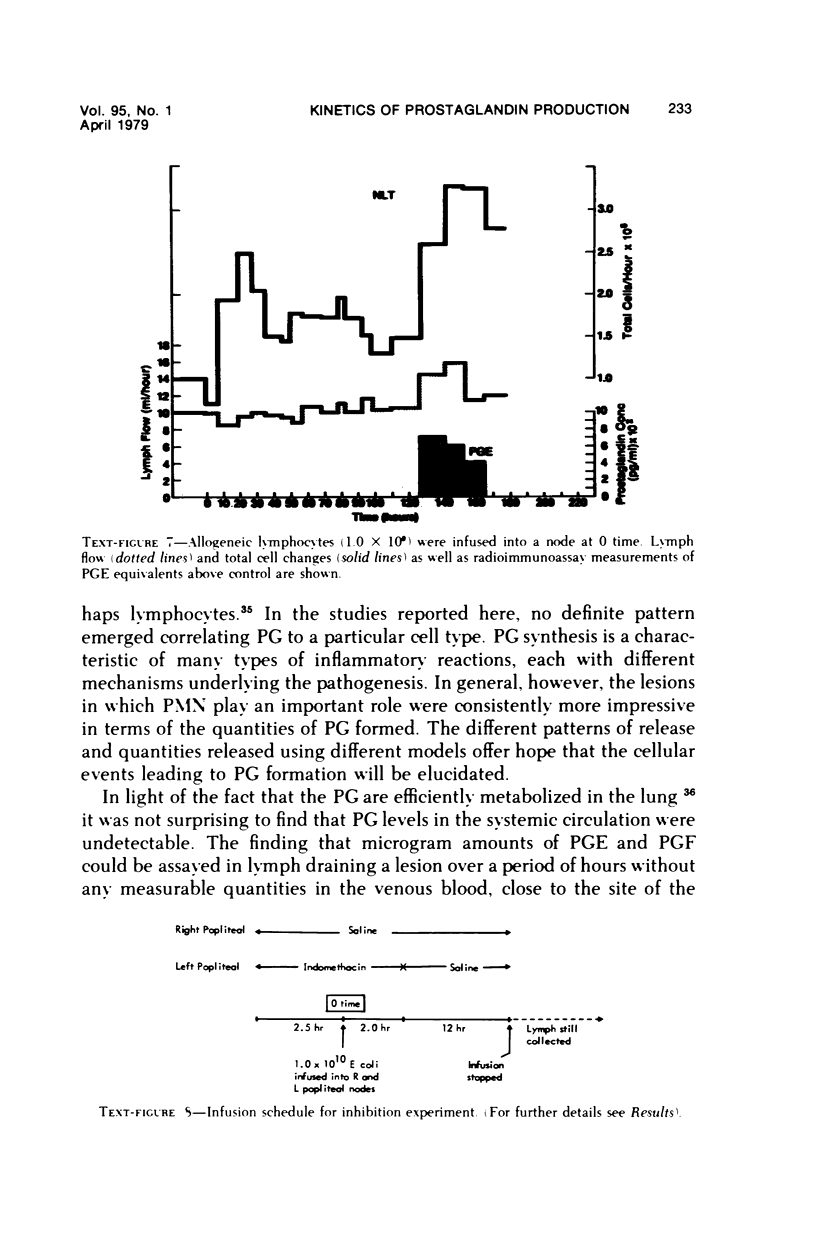
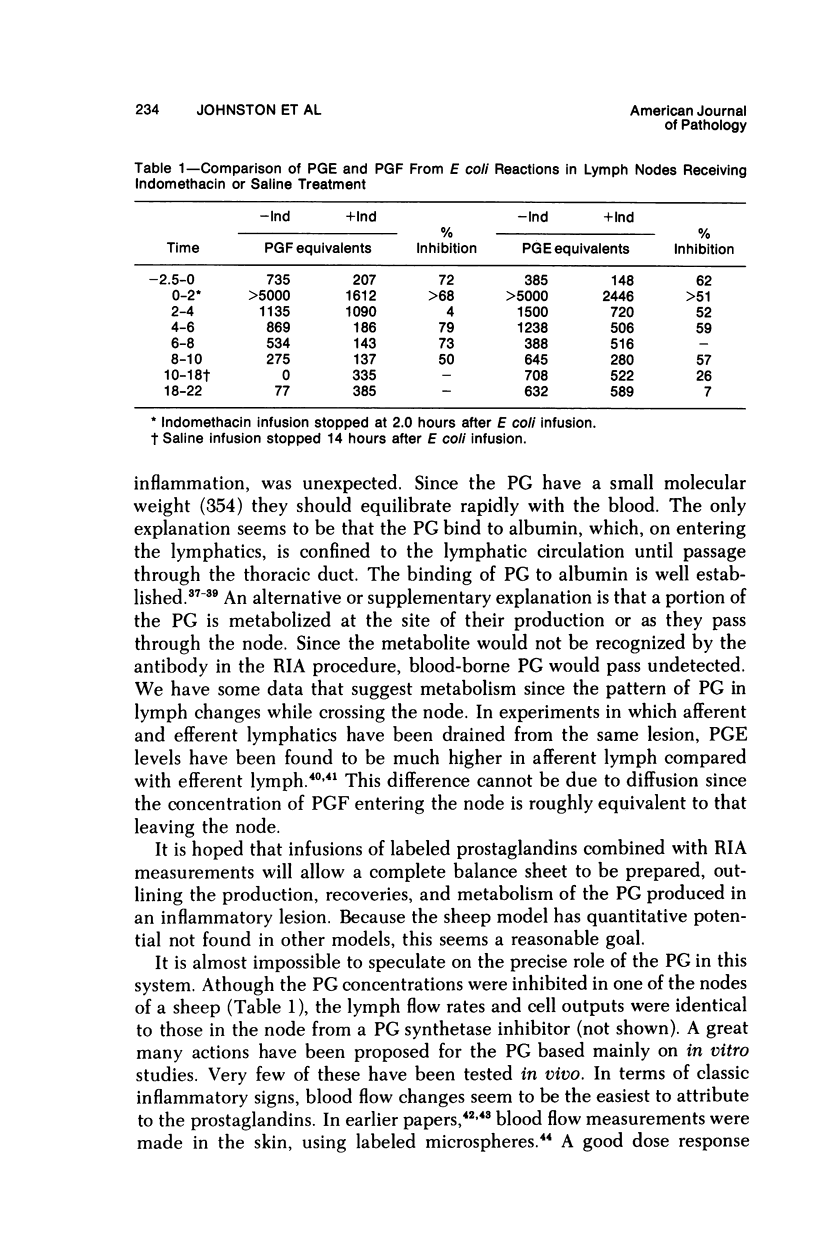
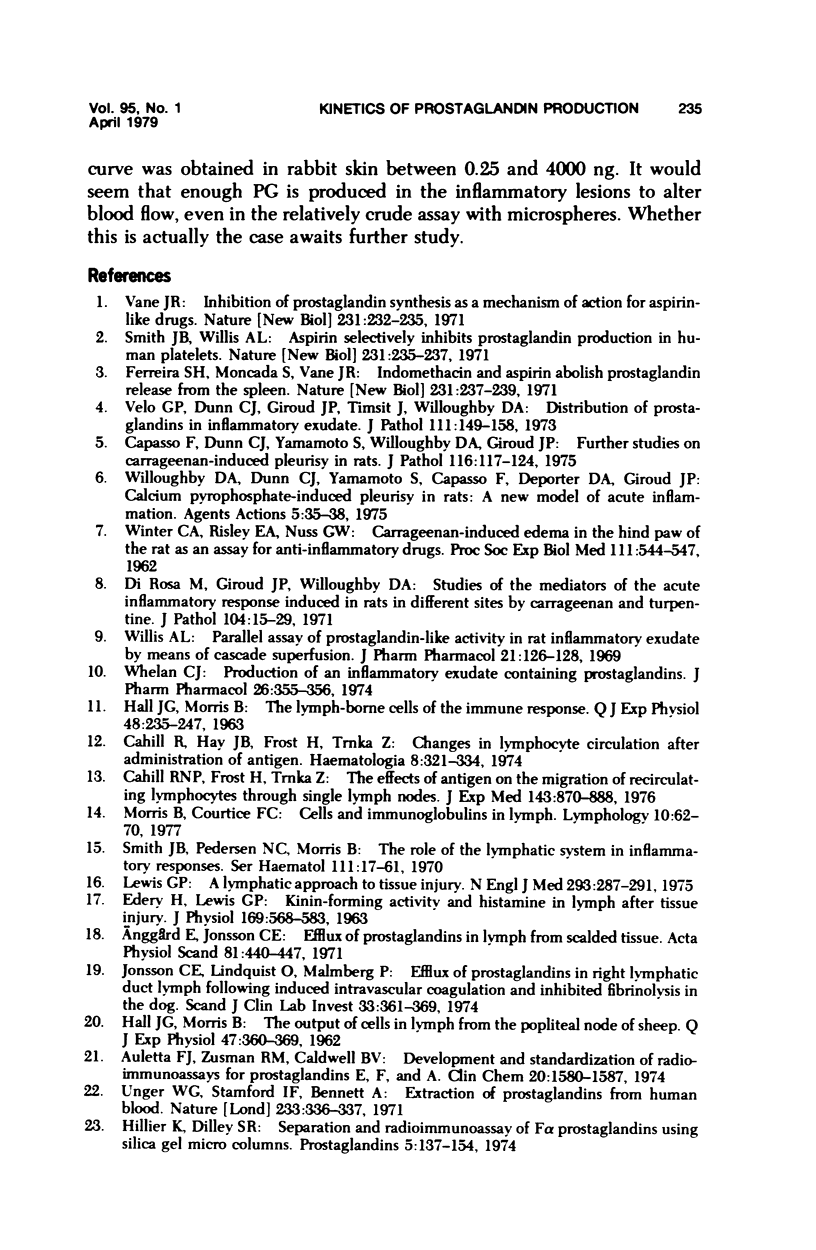
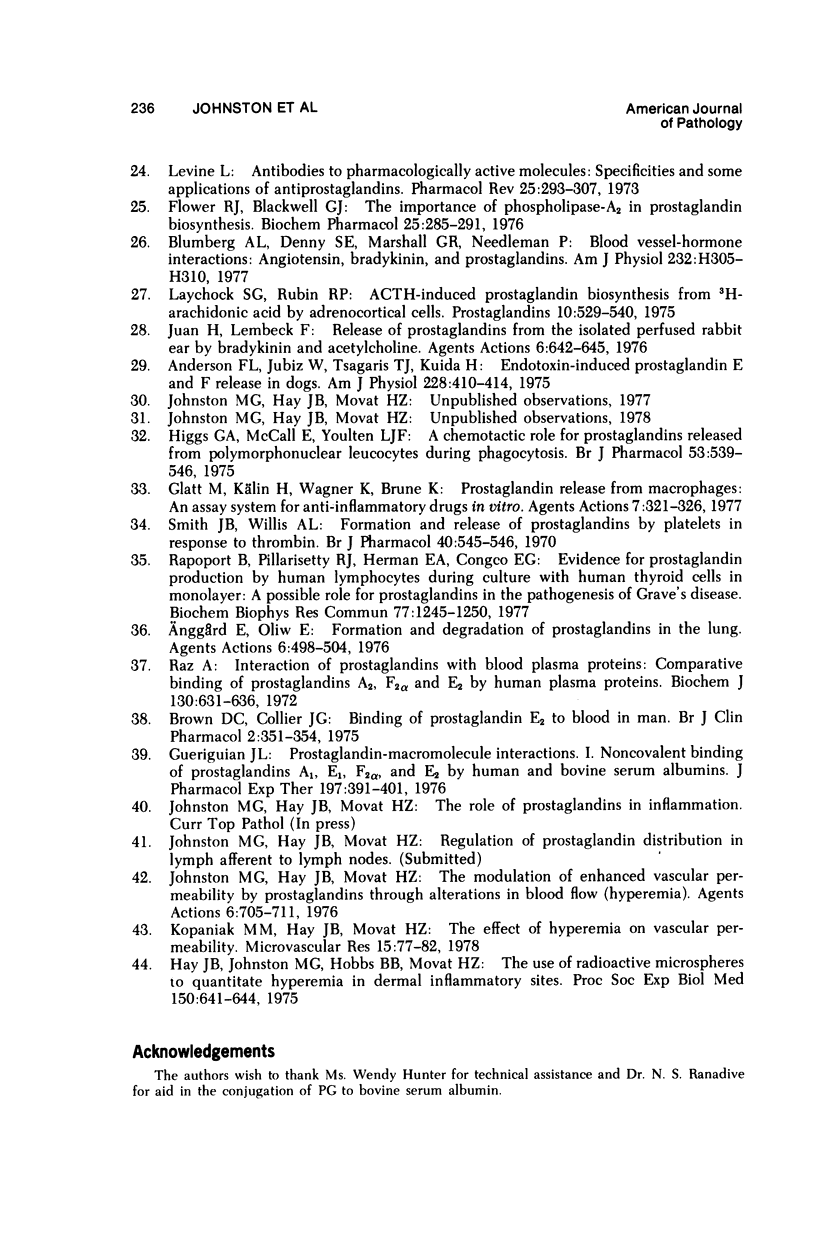
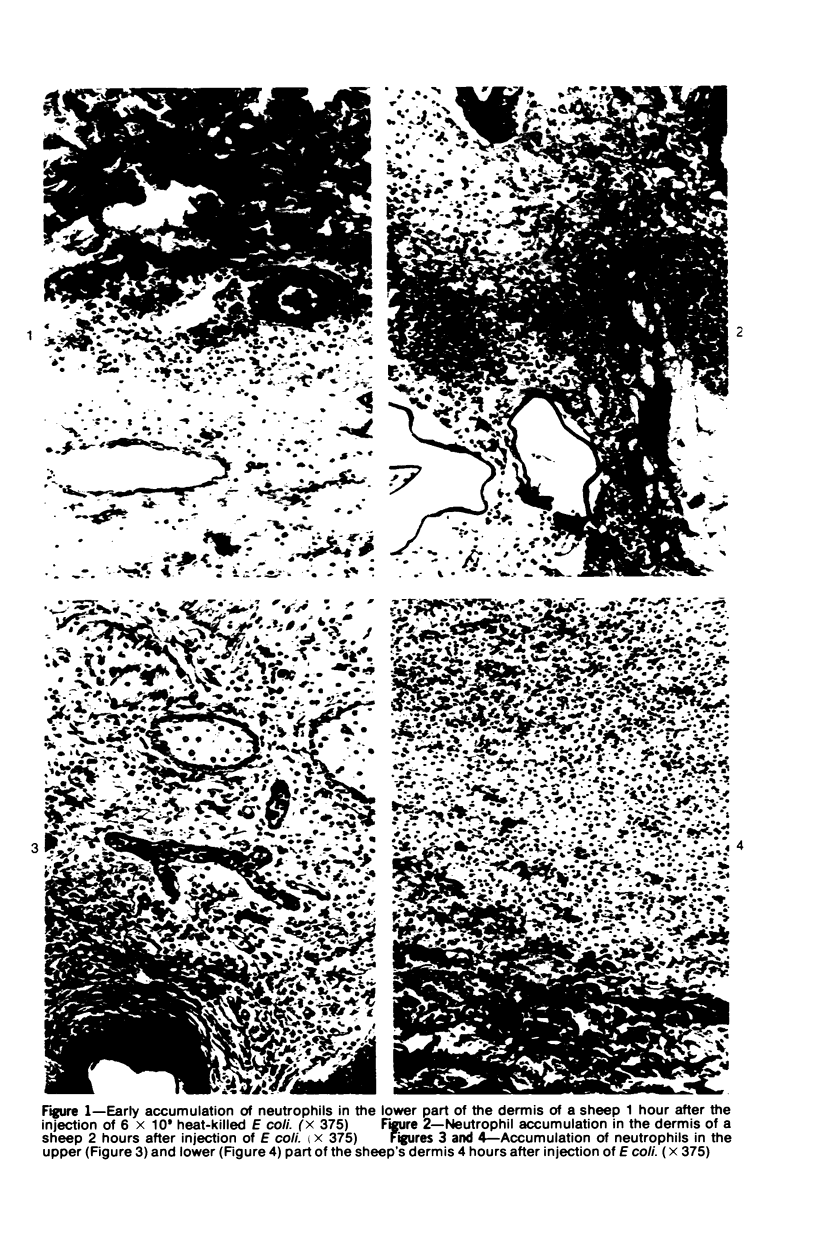
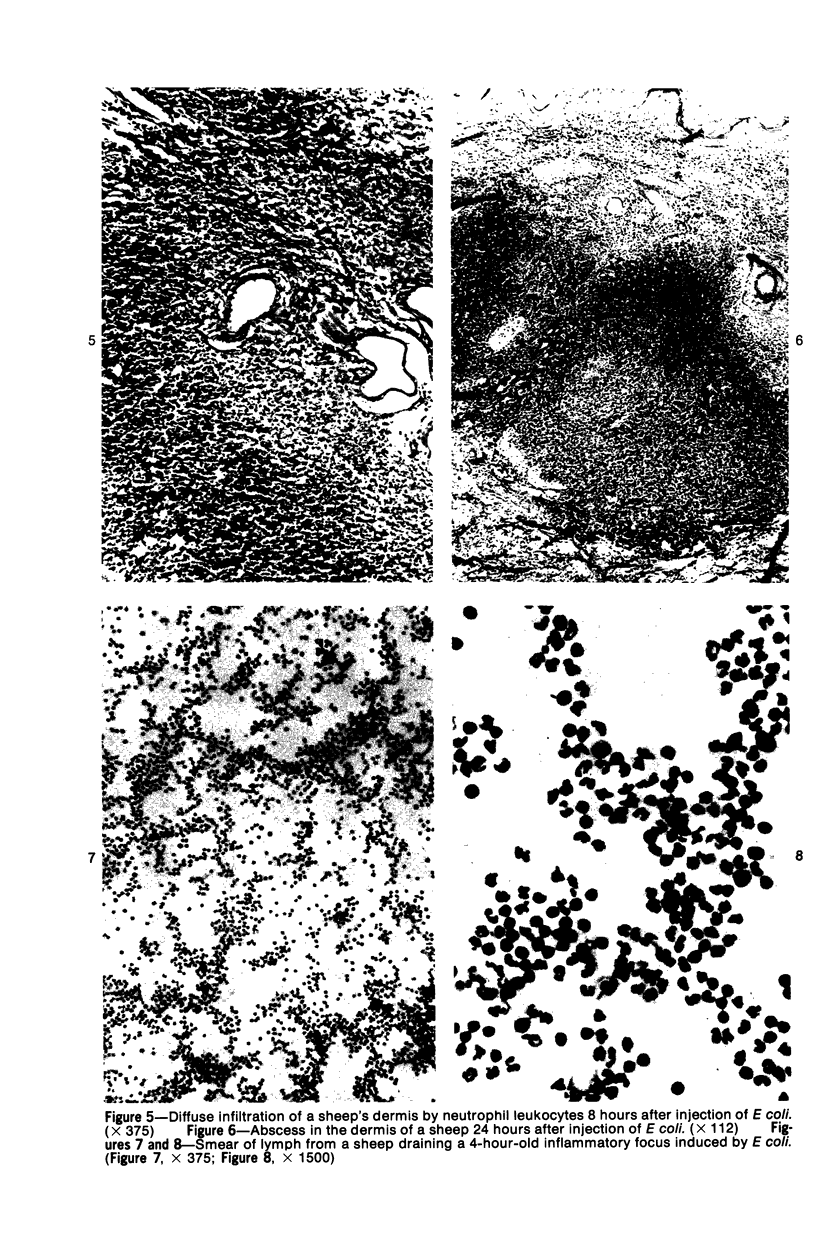
Images in this article
Selected References
These references are in PubMed. This may not be the complete list of references from this article.
- Anderson F. L., Jubiz W., Tsagaris T. J., Kuida H. Endotoxin-induced prostaglandin E and F release in dogs. Am J Physiol. 1975 Feb;228(2):410–414. doi: 10.1152/ajplegacy.1975.228.2.410. [DOI] [PubMed] [Google Scholar]
- Anggard E., Oliw E. Formation and degradation of prostaglandins in the lung. Agents Actions. 1976 Jul;6(4):498–504. doi: 10.1007/BF01973268. [DOI] [PubMed] [Google Scholar]
- Anggård E., Jonsson C. E. Efflux of prostaglandins in lymph from scalded tissue. Acta Physiol Scand. 1971 Apr;81(4):440–447. doi: 10.1111/j.1748-1716.1971.tb04921.x. [DOI] [PubMed] [Google Scholar]
- Auletta F. J., Ausman R. M., Caldwell B. V. Development and standardization of radioimmunoassays for prostaglandins E, F, and A. Clin Chem. 1974 Dec;20(12):1580–1587. [PubMed] [Google Scholar]
- Blumberg A. L., Denny S. E., Marshall G. R., Needleman P. Blood vessel-hormone interactions: angiotensin, bradykinin, and prostaglandins. Am J Physiol. 1977 Mar;232(3):H305–H310. doi: 10.1152/ajpheart.1977.232.3.H305. [DOI] [PubMed] [Google Scholar]
- Brown D. C., Collier J. G. Binding of prostaglandin E2 to blood in man. Br J Clin Pharmacol. 1975 Aug;2(4):351–354. doi: 10.1111/j.1365-2125.1975.tb02783.x. [DOI] [PMC free article] [PubMed] [Google Scholar]
- Cahill R. N., Frost H., Trnka Z. The effects of antigen on the migration of recirculating lymphocytes through single lymph nodes. J Exp Med. 1976 Apr 1;143(4):870–888. doi: 10.1084/jem.143.4.870. [DOI] [PMC free article] [PubMed] [Google Scholar]
- Cahill R., Hay J. B., Frost H., Trnka Z. Changes in lymphocyte circulation after administration of antigen. Haematologia (Budap) 1974;8(1-4):321–334. [PubMed] [Google Scholar]
- Capasso F., Dunn C. J., Yamamoto S., Willoughby D. A., Giroud J. P. Further studies on carrageenan-induced pleurisy in rats. J Pathol. 1975 Jun;116(2):117–124. doi: 10.1002/path.1711160208. [DOI] [PubMed] [Google Scholar]
- Di Rosa M., Giroud J. P., Willoughby D. A. Studies on the mediators of the acute inflammatory response induced in rats in different sites by carrageenan and turpentine. J Pathol. 1971 May;104(1):15–29. doi: 10.1002/path.1711040103. [DOI] [PubMed] [Google Scholar]
- EDERY H., LEWIS G. P. KININ-FORMING ACTIVITY AND HISTAMINE IN LYMPH AFTER TISSUE INJURY. J Physiol. 1963 Dec;169:568–583. doi: 10.1113/jphysiol.1963.sp007280. [DOI] [PMC free article] [PubMed] [Google Scholar]
- Ferreira S. H., Moncada S., Vane J. R. Indomethacin and aspirin abolish prostaglandin release from the spleen. Nat New Biol. 1971 Jun 23;231(25):237–239. doi: 10.1038/newbio231237a0. [DOI] [PubMed] [Google Scholar]
- Flower R. J., Blackwell G. J. The importance of phospholipase-A2 in prostaglandin biosynthesis. Biochem Pharmacol. 1976 Feb 1;25(3):285–291. doi: 10.1016/0006-2952(76)90216-1. [DOI] [PubMed] [Google Scholar]
- Glatt M., Kälin H., Wagner K., Brune K. Prostaglandin release from macrophages: an assay system for anti-inflammatory drugs in vitro. Agents Actions. 1977 Sep;7(3):321–326. doi: 10.1007/BF01969563. [DOI] [PubMed] [Google Scholar]
- Gueriguian F. L. Prostaglandin-macromolecule interactions. I. Noncovalent binding of prostaglandins A1, E1, F2alpha, and E2 by human and bovine serum albumins. J Pharmacol Exp Ther. 1976 May;197(2):391–401. [PubMed] [Google Scholar]
- HALL J. G., MORRIS B. The lymph-borne cells of the immune response. Q J Exp Physiol Cogn Med Sci. 1963 Jul;48:235–247. doi: 10.1113/expphysiol.1963.sp001660. [DOI] [PubMed] [Google Scholar]
- HALL J. G., MORRIS B. The output of cells in lymph from the popliteal node of sheep. Q J Exp Physiol Cogn Med Sci. 1962 Oct;47:360–369. doi: 10.1113/expphysiol.1962.sp001620. [DOI] [PubMed] [Google Scholar]
- Hay J. B., Johnston M. G., Hobbs B. B., Movat H. Z. The use of radioactive microspheres to quantitate hyperemia in dermal inflammatory sites. Proc Soc Exp Biol Med. 1975 Dec;150(3):641–644. doi: 10.3181/00379727-150-39096. [DOI] [PubMed] [Google Scholar]
- Higgs G. A., McCall E., Youlten L. J. A chemotactic role for prostaglandins released from polymorphonuclear leucocytes during phagocytosis. Br J Pharmacol. 1975 Apr;53(4):539–546. doi: 10.1111/j.1476-5381.1975.tb07392.x. [DOI] [PMC free article] [PubMed] [Google Scholar]
- Johnston M. G., Hay J. B., Movat H. Z. The modulation of enhanced vascular permeability by prostaglandins through alterations in blood flow (hyperemia). Agents Actions. 1976 Nov;6(6):705–711. doi: 10.1007/BF02026092. [DOI] [PubMed] [Google Scholar]
- Jonsson C. E., Lindquist O., Malmberg P. Efflux of prostaglandins in right lymphatic duct lymph following induced intravascular coagulation and inhibited fibrinolysis in the dog. Scand J Clin Lab Invest. 1974 Jun;33(4):361–369. [PubMed] [Google Scholar]
- Juan H., Lembeck F. Release of prostaglandins from the isolated perfused rabbit ear by bradykinin and acetylcholine. Agents Actions. 1976 Sep;6(5):642–645. doi: 10.1007/BF01971584. [DOI] [PubMed] [Google Scholar]
- Kopaniak M. M., Hay J. B., Movat H. Z. The effect of hyperemia on vascular permeability. Microvasc Res. 1978 Jan;15(1):77–82. doi: 10.1016/0026-2862(78)90007-9. [DOI] [PubMed] [Google Scholar]
- Laychock S. G., Rubin R. P. ACTH-induced prostaglandin biosynthesis from 3H-arachidonic acid by adrenocortical cells. Prostaglandins. 1975 Sep;10(3):529–540. doi: 10.1016/0090-6980(75)90135-5. [DOI] [PubMed] [Google Scholar]
- Levine L. Antibodies to pharmacologically active molecules: specificities and some applications of antiprostaglandins. Pharmacol Rev. 1973 Jun;25(2):293–307. [PubMed] [Google Scholar]
- Lewis G. P. A lymphatic approach to tissue injury. N Engl J Med. 1975 Aug 7;293(6):287–291. doi: 10.1056/NEJM197508072930608. [DOI] [PubMed] [Google Scholar]
- Morris B., Courtice F. C. Cells and immunoglobulins in lymph. Lymphology. 1977 Jun;10(2):62–70. [PubMed] [Google Scholar]
- Rapoport B., Pillarisetty R. J., Herman E. A., Congco E. G. Evidence for prostaglandin production by human lymphocytes during culture with human thyroid cells in monolayer: a possible role for prostaglandins in the pathogenesis of Graves' disease. Biochem Biophys Res Commun. 1977 Aug 22;77(4):1245–1250. doi: 10.1016/s0006-291x(77)80113-7. [DOI] [PubMed] [Google Scholar]
- Raz A. Interaction of prostaglandins with blood plasma proteins. Comparative binding of prostaglandins A 2 , F 2 and E 2 to human plasma proteins. Biochem J. 1972 Nov;130(2):631–636. doi: 10.1042/bj1300631. [DOI] [PMC free article] [PubMed] [Google Scholar]
- Smith J. B., Pedersen N. C., Morris B. The role of the lymphatic system in inflammatory responses. Ser Haematol. 1970;3(2):17–61. [PubMed] [Google Scholar]
- Smith J. B., Willis A. L. Aspirin selectively inhibits prostaglandin production in human platelets. Nat New Biol. 1971 Jun 23;231(25):235–237. doi: 10.1038/newbio231235a0. [DOI] [PubMed] [Google Scholar]
- Unger W. G., Stamford I. F., Bennett A. Extraction of prostaglandins from human blood. Nature. 1971 Oct 1;233(5318):336–337. doi: 10.1038/233336b0. [DOI] [PubMed] [Google Scholar]
- Vane J. R. Inhibition of prostaglandin synthesis as a mechanism of action for aspirin-like drugs. Nat New Biol. 1971 Jun 23;231(25):232–235. doi: 10.1038/newbio231232a0. [DOI] [PubMed] [Google Scholar]
- Velo G. P., Dunn C. J., Giroud J. P., Timsit J., Willoughby D. A. Distribution of prostaglandins in inflammatory exudate. J Pathol. 1973 Nov;111(3):149–158. doi: 10.1002/path.1711110302. [DOI] [PubMed] [Google Scholar]
- WINTER C. A., RISLEY E. A., NUSS G. W. Carrageenin-induced edema in hind paw of the rat as an assay for antiiflammatory drugs. Proc Soc Exp Biol Med. 1962 Dec;111:544–547. doi: 10.3181/00379727-111-27849. [DOI] [PubMed] [Google Scholar]
- Whelan C. J. Production of an inflammatory exudate containing prostaglandins. J Pharm Pharmacol. 1974 May;26(5):355–356. doi: 10.1111/j.2042-7158.1974.tb09288.x. [DOI] [PubMed] [Google Scholar]
- Willis A. L. Parallel assay of prostaglandin-like activity in rat inflammatory exudate by means of cascade superfusion. J Pharm Pharmacol. 1969 Feb;21(2):126–128. doi: 10.1111/j.2042-7158.1969.tb08213.x. [DOI] [PubMed] [Google Scholar]
- Willoughby D. A., Dunn C. J., Yamamoto S., Capasso F., Deporter D. A., Giroud J. P. Calcium pyrophosphate-induced pleurisy in rats: a new model of acute inflammation. Agents Actions. 1975 Feb;5(1):35–38. doi: 10.1007/BF02027156. [DOI] [PubMed] [Google Scholar]



